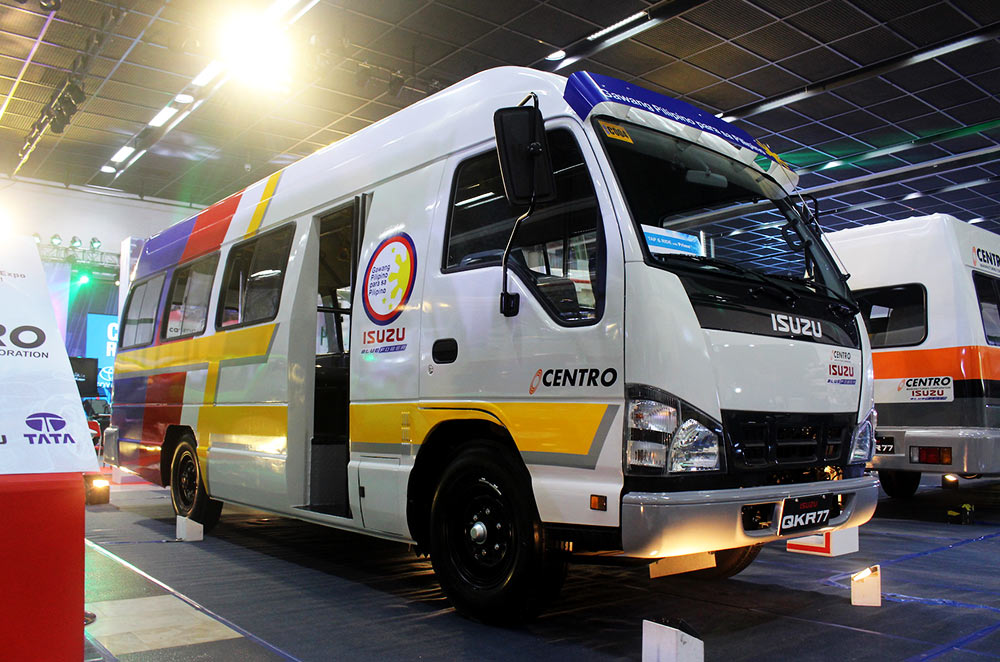
The day for when the jeepney will be replaced is getting closer and closer. The Automotive Body Manufacturers Association of the Philippines (ABMAP) has discussed the benefits of the Modern Eco PUV to local operators.
ABMAP works closely with the Truck Manufacturers Association (TMA), the Philippines Parts Maker Association (PPMA), the Electric Vehicle Association of the Philippines (EVAP), and the Department of Trade and Industry's Bureau of Philippine Standards. The said collaboration is where the looks and dimensional standards of the modern Eco PUV was derived.
ABMAP president Vicente Mills explains that a designated BPS Technical Working Group (TWG) came up with the optimal design and dimensional limits. They also ensure that the modern Eco PUV is in conformance to the international standards. Of note, it will feature a passenger door on the curb side, more capacity, higher roofline to accommodate standing passengers, emergency exit, among others.

There are 4 classes identified based on vehicle size, passenger seating and capacity, volume and distance of route, and intended road use. Class 1 PUV branches out to Class 1A (9 to 12 passengers) and Class 1B (13 to 22 passengers, front-facing seats). This class is intended for low-density, stop and go routes that are commonly done in the city.
Class 2 PUV on the other hand, is for 23 and more passengers – both seated and standing. It measures 7,000-mm long and 2,350-mm wide. The vehicle's floor-to-ceiling height of 1,750 mm makes standing inside the vehicle possible. Passengers whose height go up to 5'7” can stand inside without any issues.
Class 3 PUV is similar to Class 2 minus the standing passengers. This class features front-facing seats and is intended for faster speed travel from city to city. Lastly, Class 4 PUV, which is also similar to Class 3 except that there are provisions for cargos, is intended for provincial travel. These are more likely to be seen on expressways and highways.
“The TWG focused first on Class 2 and 3 which constitute about 60% of PUVs needed for the more than 200,000 jeepneys that are more than fifteen years old that needed to be upgraded. Approved was BPS PNS 2126:2017 to cover their dimensional limits which was made the basis for the various Eco PUV prototypes exhibited during the recent Eco PUV Showcase of the BOI.”
The notable adjustment on the Eco PUV is the increased floor-to-ceiling height, which allows standing passengers. This results to more passengers and could cause in an incremental income for the operator. With the Modern Eco PUV, passengers can stand in the same manner as they do in the MRT or in buses.
With the Modern Eco PUV, roads will have more clean air to breathe, more organized daily commute, and more comfortable travel.
Latest News
-
Geely’s EX2 EV headed to Australia — is a Philippine launch possible? / News
The Geely EX2 is confirmed to go on sale in Australia in 2026. Could a launch in the Philippines also be on the cards?
-
Hyundai Motor Philippines is the FIFA Futsal Women's Teams' official mobility partner / News
Hyundai Motor Philippines strengthened its partnership with FIFA through its support of the FIFA Futsal Women's Teams.
-
Kia Philippines backs EJ Obiena as Atletang Ayala continues championing Filipino athletes / News
Kia Philippines strengthens its support for EJ Obiena, backing the Olympian with dedicated mobility at home and abroad.
Popular Articles
-
Electric Vehicles in the Philippines for under P1 million
Jerome Tresvalles · Aug 19, 2025
-
Top 3 Cars For Every Lifestyle—What Cars Are Right For You? | Behind a Desk
Caco Tirona · Apr 24, 2024
-
5 Tips to Maximize Fuel Efficiency
Jerome Tresvalles · Sep 09, 2024
-
Five driving habits that are draining your fuel tank
Jerome Tresvalles · Jun 24, 2025
-
Can engine braking harm your engine?
Jerome Tresvalles · Sep 11, 2025
-
Do electric cars even need maintenance?
Jerome Tresvalles · Oct 23, 2024
-
Best vehicles for an active outdoor lifestyle
Shaynah Miranda · Jul 25, 2024
-
How to drive different types of vehicle transmissions
May 23, 2024
-
5 easy ways to keep your car interior clean
Allysa Mae Zulueta · Nov 15, 2021
-
How to survive Metro Manila traffic
Earl Lee · Aug 16, 2022



